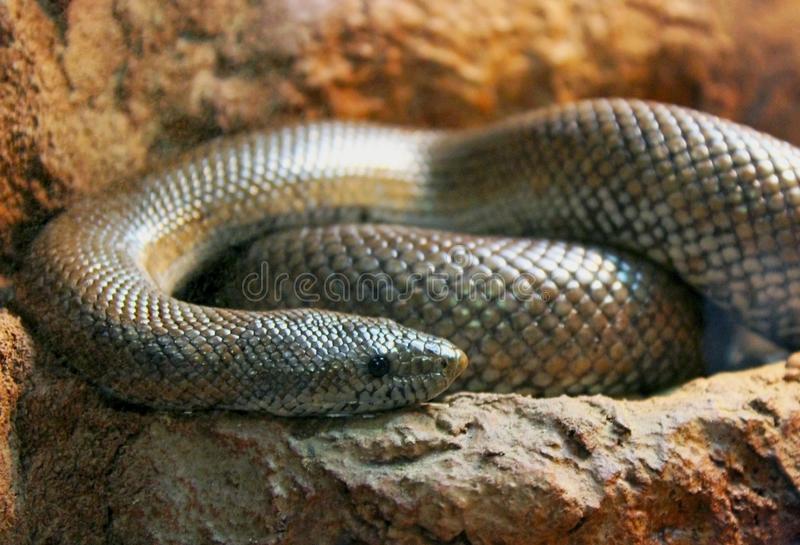ANIMAL: Rosy Boa Charina/Lichanura trivirgata Type of Animal: Boa/Python Habitat: Desert, coastal areas, granite outcroppings in desert/coastal areas, rocky desert/coastal areas, arid scrub, brushland, sandy plains, desert slopes, rocky slopes, mountain slopes, near-desert areas, dry/semidry shrubland, scattered rocks/boulders, talus slopes, boulder-strewn hillsides, south-facing hillsides, coastal desert canyons, rocky canyons, canyon streamsides, desert streams, chaparral, scrub forest, caves, desert scrub, rocky mountainsides in desert, low desert basins, rocky shrubland, creekbeds, riparian areas, found from sea level to 7,000 ft Location(s): SW Arizona, S California, NW Mexico Appearance: Highly variable coloration, most often rosy/salmon ventral coloration, Coastal/Baja subspecies rosier, other 3 subspecies Mexican/Desert/Arizona have dark to orange spots on light-colored ventral coloration, Desert subspecies light colored w/ well-defined pink/orange/tan longitudinal stripes, Coastal subspecies dark color w/ blotchy reddish-brown longitudinal stripes (sometimes less well-defined), Mexican subspecies creamy/yellowish color laced w/ pale creamy broad longitudinal stripes or dark brown sharp edged stripes, overall color can range from gray/bluish-gray to tan to yellow/cream/white, chin/throat grayish-white to cream Food/Diet: Rodents, young rabbits, bats, birds, lizards, amphibians, other snakes, insects, insect larvae Status in Wild: Stable Conservation: Breeding in zoos, wildlife centers, & herpetoculture Lifestyle: Solitary Additional Info: Called: Male Female Young: Snakelet Group: Solitary Weight: Male: 0.5 lb Female: 1 lb Gestation: 3-4.5 months Life Span: 15-20 years in wild, 30 years in captivity Body Length: Male: 1.5 ft Female: 2.5-3 ft Young: 1 ft Tail Length: Male: 2.52 in Female: 3.9-4.68 in Main predators are weasels, skunks, raccoons, ringtails, foxes, coyotes, raptors, shrikes, kingsnakes, & roadrunners. Like most boas, they’re ovoviviparous, w/ eggs hatching inside mom’s body resulting in 3-12 live young. Disputed whether they belong to own monotypic genus Lichanura or in genus Charina w/ 2 rubber boa species. These 3 species only boas native to US. Active any time of day but more nocturnal in very hot weather. Like all boas, they kill prey by constricting & swallowing whole. Less active in winter often going dormant into brumation/hibernation. Hunt by ambush/stalking. Most active in late spring. Sexually mature at 2 years old. Fun Fact(s): Very slow-moving, w/ average speed of 1 mph. When threatened, they roll into ball keeping head in center. If this doesn’t work, they’ll release foul-smelling musk from anal glands. They’re very docile & gentle snakes that often make good pets.
